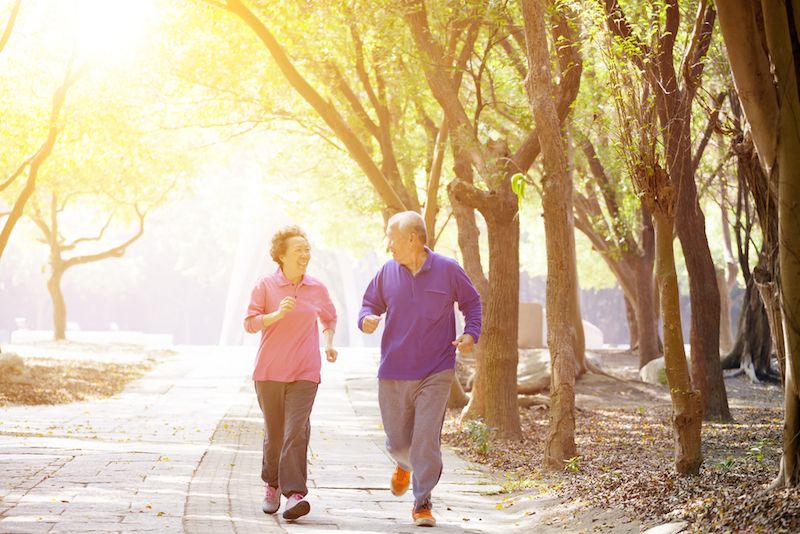Combining Aerobic and Resistance Exercise Works Best for Older Adults

People who are both elderly and obese face a tough conundrum: Weight loss is critical for health and mobility, but weight loss can also lead to a decline in muscle and bone mass.
The trick for this doubly challenged group is to achieve weight loss without increasing the risk of falls and fractures that can result from shrinking muscle mass and bone density.
The ideal prescription, according to new research published today (May 17) in the New England Journal of Medicine, is a combination of diet and an exercise regimen that includes both aerobic and resistance training. [The 4 Types of Exercise You Need to Be Healthy]
"You need both the benefits of endurance from aerobic exercise and the improvement of muscle strength from resistance exercise," said Dr. Dennis Villareal, a physician and professor of Medicine-Endocrinologyat Baylor College of Medicine in Houston."Combining them creates the biggest benefit."
The findings could potentially help a large segment of the U.S. population. More than one-third of people age 65 or older are classified as obese. Being overweight has been associated with limited mobility and increased frailty.
"Obesity poses a unique problem for the elderly, because they can't adapt to a higher body weight by producing more muscle and bone mass," Villareal told Live Science.
Looking at the effects of exercise
To find out which combination of diet and exercise was most effective for obese, elderly adults, Villareal and colleagues evaluated the effects of dieting and exercise in 160 adults over a six-month period. All the study participants were over the age of 65, had a body mass index of 30 or more and had been living mostly sedentary lives.
Sign up for the Live Science daily newsletter now
Get the world’s most fascinating discoveries delivered straight to your inbox.
The participants were divided into four groups. Three of those groups followed a prescribed diet and took part in an exercise program, with one group doing only aerobic exercise, such as treadmill walking and stationary cycling, one doing only resistance exercise (using upper and lower body weight-lifting machines) and a third group doing both aerobic and resistance exercises. The fourth group, which didn't follow any diet or exercise programs, served as a control.
At the start and end of the program, investigators used a test that is common in this type of research, called the Physical Performance Test, to evaluate each person. The test evaluates a person's ability to complete certain tasks, such as walking 50 feet, putting on and taking off a coat, picking up a penny, balancing on one leg and climbing a flight of stairs. They also evaluated the participants' peak oxygen consumption while they were walking on a treadmill, and the maximum weight they could lift on various resistance-training machines. From these tests, the researchers calculated an overall physical-function score.
After the six months, results among the 141 participants who completed the trial showed that those in the three groups who followed a diet plan lost about 9 percent of their body weight, on average. [How to Lose Weight in 2017 (and Keep It Off for Good)]
As for the role of exercise, the tests showed that while dieting and either aerobic or resistance exercise alone improved the participants' overall physical function by 14 percent, neither was as effective as the triple combination of dieting, aerobic exercise and resistance exercise. That combination yielded a 21 percent improvement.
Villareal said that when he first set out to conduct the research, he had predicted that the best approach for obese, elderly people might be resistance exercise alone, since he believed that aerobic exercise might negate the muscle-building effects of resistance exercise. The results did, in fact, show that people who did both aerobic and resistance exercise lost about 1 percent more in lean (i.e., muscle) mass than those who did only resistance exercise.
But Villareal said the overall physical-performance tests proved that the 1 percent additional loss in muscle mass that came with doing aerobic exercise was overshadowed by the positive effects of improved cardiovascular health gained from including aerobic exercise in the regimen.
"In the end, the combined benefits of both kinds of exercise was most important," he said.
Lifestyle changes
But further studies will be needed to confirm the findings: As the study's authors point out, the clinical trial was relatively small, and the participants were mostly female and white. Villareal hopes to expand the trials to incorporate larger, more diverse groups in future studies.
Nonetheless, Villareal said that research on the elderly and obese remains limited, and he hopes data like his might offer some guidance.
The prescription Villareal's team calls for amounts to 75 to 90 minutes of exercise a day, three days a week. For older, obese people, committing to such a routine would involve a significant lifestyle change. Villareal said his experience with patients suggests that people can rise to the challenge. [Lose Weight Smartly: 7 Little-Known Tricks That Shave Pounds]
"Some people argue that it can be too hard to change lifelong habits," Villareal said. "But we show that the elderly are motivated, and they can change their lifestyles even late in life."
Villareal said his study's recommendations are intended only for those who are elderly and obese. As for younger adultslooking to lose weight and get toned, the best approach may depend on the desired outcome. In a 2013 study in the Journal of Applied Physiology, researchers compared aerobic and resistance training and found that aerobic training worked best for losing weight and keeping weight off. But for increasing lean body mass, resistance training was most effective.
Originally published on Live Science.













